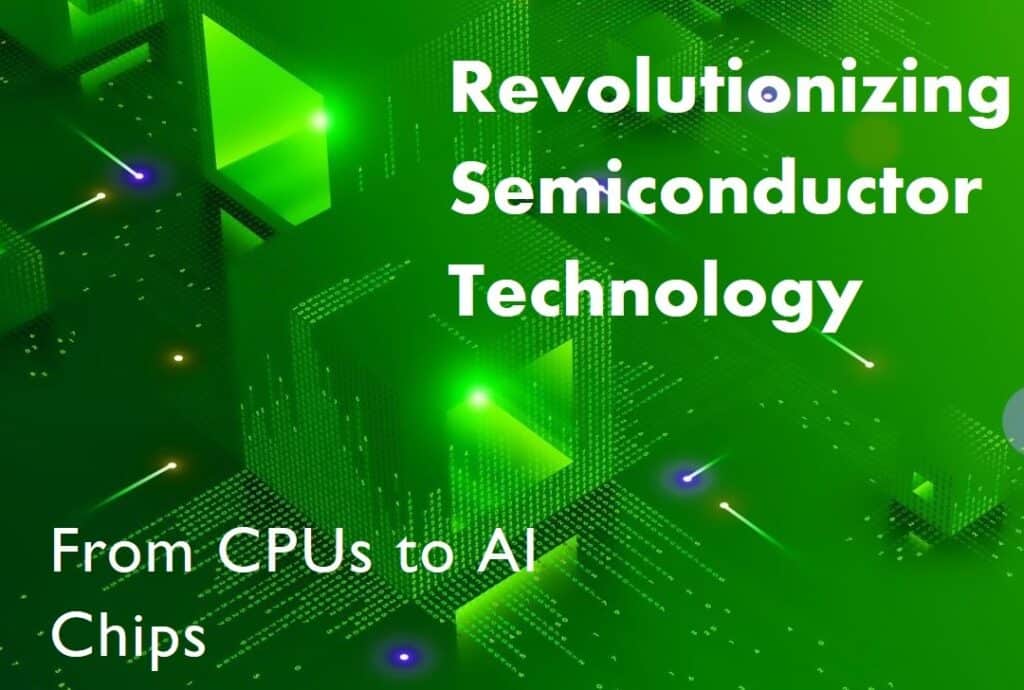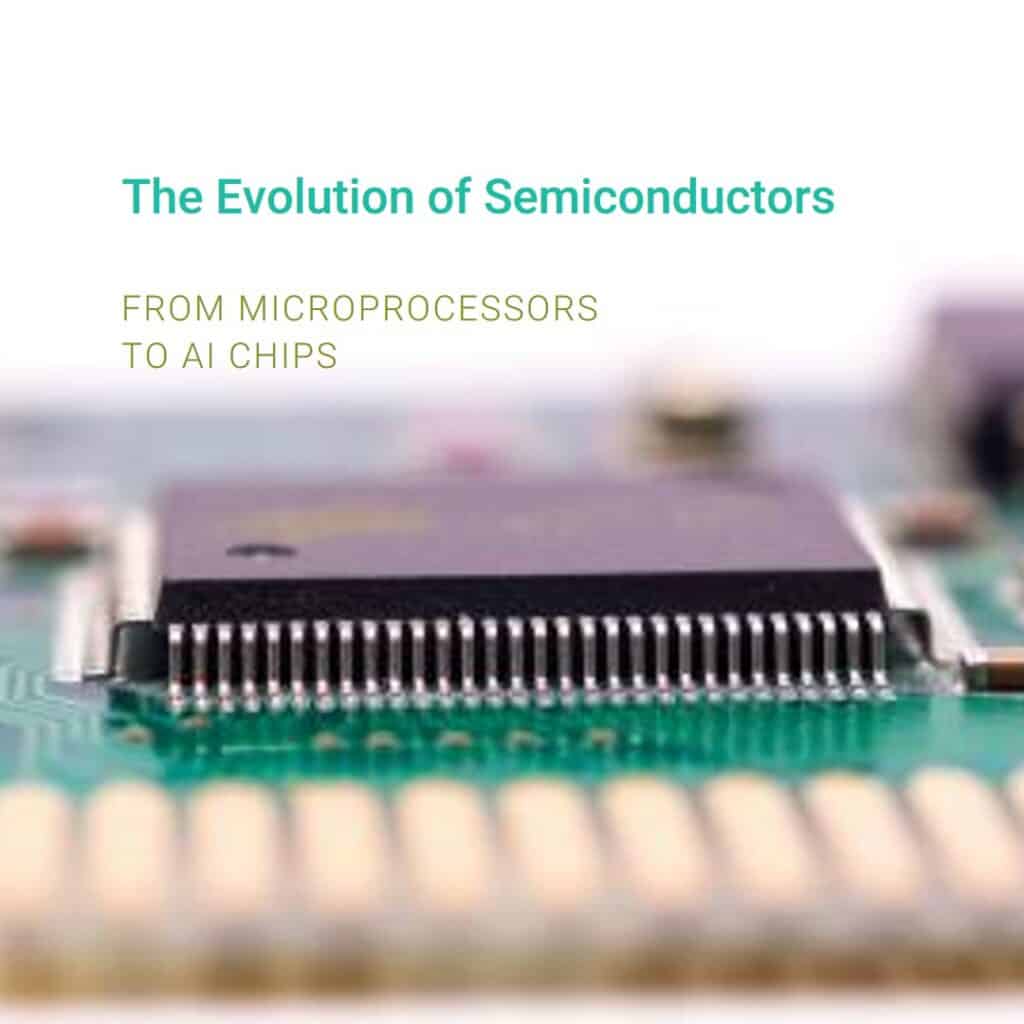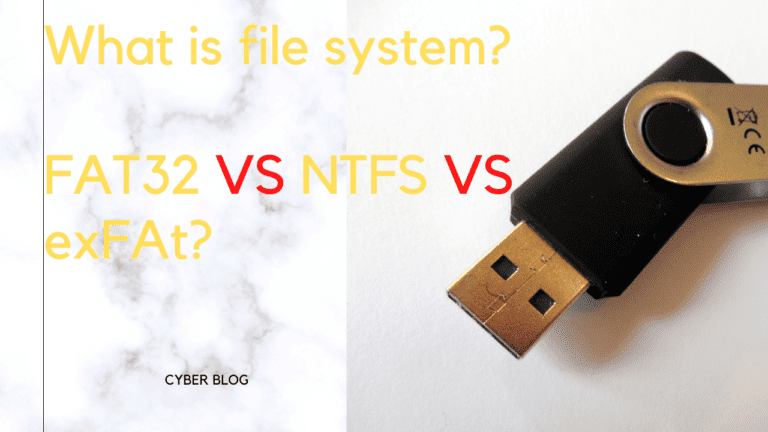Innovations in Semiconductor Technology Leading from CPUs to AI Chips
Semiconductor technology is at the core of modern electronics, driving innovation from the early days of computing to today’s AI-driven world. From the invention of microprocessors to the development of AI chips, semiconductor technology has continually evolved, enabling more powerful, efficient, and smaller electronic devices. This article delves into the evolution of semiconductor technology, examining its origins, groundbreaking advancements, and future directions.
Table of Contents
1. Introduction to Semiconductor Technology
Semiconductor technology refers to the design, development, and manufacturing of semiconductor devices, which are crucial for modern electronic systems. Semiconductors, such as silicon, germanium, and gallium arsenide, have unique electrical properties that can be manipulated through doping, allowing for precise control over the flow of electric current. This ability makes them ideal for use in transistors, diodes, and integrated circuits (ICs), which form the building blocks of most electronic devices today.
Since the invention of the transistor in 1947 by John Bardeen, Walter Brattain, and William Shockley at Bell Labs, semiconductor technology has transformed industries such as computing, telecommunications, healthcare, and automotive. The transistor enabled the miniaturization of electronic circuits and paved the way for the development of microprocessors, ICs, and more advanced chips that have become integral to digital devices.
2. The Birth and Evolution of Microprocessors
The microprocessor is one of the most significant breakthroughs in semiconductor technology. A microprocessor, or CPU, is the brain of a computer that performs computations and processes instructions. The invention of the microprocessor marked the beginning of a new era in computing, revolutionizing how computers were built and operated.
- Intel 4004: The First Microprocessor
The first commercially available microprocessor, the Intel 4004, was released in 1971. It was a 4-bit processor with 2,300 transistors and could perform about 92,000 instructions per second. This was revolutionary because it integrated the CPU’s functionality onto a single chip, replacing the need for multiple chips and paving the way for smaller, more efficient computers. - Evolution to 16-bit and 32-bit Microprocessors
Following the Intel 4004, more powerful microprocessors were developed. The Intel 8086, released in 1978, was the first 16-bit microprocessor, leading to the IBM PC era. The subsequent development of 32-bit microprocessors, such as the Intel 80386, further increased computing power, enabling more complex applications and operating systems. - Multi-core Processors and Modern CPUs
The evolution continued with the introduction of multi-core processors, which integrated multiple processing units (cores) onto a single chip. This innovation allowed for parallel processing, significantly boosting performance and efficiency. Modern CPUs, such as Intel’s Core and AMD’s Ryzen series, now feature up to 16 cores or more, enabling unprecedented levels of multitasking and computational power.
3. The Role of Integrated Circuits (ICs) in Advancing Semiconductor Technology
Integrated Circuits (ICs) represent a critical advancement in semiconductor technology, enabling the integration of millions to billions of transistors on a single chip. ICs significantly contributed to the miniaturization and cost reduction of electronic devices.
- The Development of ICs
The concept of ICs was first proposed by Geoffrey Dummer, a British engineer, in 1952. However, it wasn’t until 1958 that Jack Kilby of Texas Instruments successfully built the first IC, which led to a Nobel Prize in Physics in 2000. ICs replaced bulky and unreliable vacuum tubes, allowing for the development of more compact, reliable, and efficient electronic devices. - Moore’s Law and its Impact on ICs
In 1965, Gordon Moore, co-founder of Intel, predicted that the number of transistors on a microchip would double approximately every two years, leading to exponential growth in computational power and a reduction in cost. This observation, known as Moore’s Law, has driven the semiconductor industry for decades, pushing companies to develop smaller, faster, and more efficient ICs. - Types of Integrated Circuits
ICs come in various forms, including analog, digital, and mixed-signal ICs. Digital ICs, such as microcontrollers, memory chips, and microprocessors, are crucial in modern computing systems. Analog ICs are used in applications like amplifiers and oscillators, while mixed-signal ICs combine both analog and digital functionalities, making them vital for communication and signal processing.
4. Advances in Semiconductor Process Nodes
The term “process node” in semiconductor technology refers to the manufacturing process and technology used to fabricate ICs. The advancement of process nodes, measured in nanometers (nm), has been crucial in increasing the density of transistors on a chip, enhancing performance, and reducing power consumption.
- From Micron to Nanometer Scale
Semiconductor manufacturing processes have evolved from the micron scale (e.g., 10 microns) in the 1970s to the nanometer scale today (e.g., 3nm and beyond). Each reduction in process node size has allowed for more transistors to be packed onto a chip, improving computational power and efficiency. - Key Breakthroughs in Process Nodes
As the industry moved to smaller nodes, such as 180nm, 90nm, 45nm, 22nm, 10nm, and below, several breakthroughs occurred. The introduction of FinFET (Fin Field-Effect Transistor) technology at the 22nm node was one such breakthrough. Unlike traditional planar transistors, FinFET transistors have a 3D structure that provides better control over electrical current, reducing power leakage and improving performance. - Challenges in Scaling Down
Moving to smaller nodes presents several challenges, including increased leakage currents, quantum effects, and higher manufacturing costs. As the nodes shrink below 5nm, quantum tunneling becomes a significant concern, posing a limit to how small transistors can get. To overcome these challenges, semiconductor companies are exploring new materials, such as graphene and carbon nanotubes, and innovative architectures, such as gate-all-around (GAA) transistors.
5. Rise and Evolution of Graphics Processing Units (GPUs)
Graphics Processing Units (GPUs) have played a transformative role in semiconductor technology by providing highly parallel processing power for both graphics rendering and general-purpose computing.

- GPUs: From Graphics to General Purpose
Initially developed to accelerate graphics rendering for gaming and multimedia, GPUs were designed to handle multiple tasks simultaneously. Companies like NVIDIA and AMD capitalized on this capability to develop GPUs that could perform parallel computations, making them ideal for scientific computing, data analysis, and machine learning applications. - CUDA and Parallel Computing Revolution
NVIDIA’s Compute Unified Device Architecture (CUDA) allowed developers to harness the parallel processing power of GPUs for general-purpose computing. This innovation enabled significant advancements in areas like deep learning, where massive amounts of data need to be processed simultaneously. - Evolution Towards AI and Data Centers
With the rise of artificial intelligence, GPUs have become essential for training deep learning models and deploying AI applications in data centers. NVIDIA’s Ampere architecture, with its powerful Tensor Cores, specifically targets AI workloads, delivering higher performance and energy efficiency.
6. The Emergence and Growth of AI Chips
AI chips, also known as AI accelerators, are specialized semiconductor devices designed to handle AI and machine learning workloads more efficiently than traditional CPUs and GPUs.
- Why AI Chips?
As AI applications require massive computational power and low latency, traditional CPUs and GPUs often fall short in terms of efficiency and scalability. AI chips, such as Google’s Tensor Processing Unit (TPU), NVIDIA’s A100, and Apple’s Neural Engine, are designed to accelerate matrix operations and deep learning algorithms, providing a significant performance boost for AI tasks. - Types of AI Chips
AI chips come in various forms, including Application-Specific Integrated Circuits (ASICs), Field-Programmable Gate Arrays (FPGAs), and neuromorphic chips. ASICs, like Google’s TPUs, are optimized for specific AI tasks, delivering high efficiency and low power consumption. FPGAs, on the other hand, are programmable chips that provide flexibility for various AI applications. Neuromorphic chips mimic the human brain’s architecture and are designed for energy-efficient, real-time processing. - Growth in Edge AI and On-Device Processing
The demand for AI chips is not limited to data centers; there is also a growing need for edge AI chips that can perform AI computations on-device, such as in smartphones, IoT devices, and autonomous vehicles. These chips are designed to deliver high performance with low power consumption, enabling real-time decision-making without relying on cloud-based servers.
7. Key Innovations in AI Chip Design and Architecture
Several innovations have driven the development of AI chips, making them more powerful, efficient, and versatile.
- Tensor Cores and AI-Specific Architectures
Tensor cores, first introduced by NVIDIA, are specialized processing units designed to handle tensor operations, which are fundamental in deep learning. These cores enable faster matrix multiplications and reduce the time required for training and inference in AI models. - Neuromorphic Computing
Neuromorphic computing aims to mimic the human brain’s neural networks, offering significant improvements in power efficiency and real-time processing capabilities. Companies like Intel and IBM are working on neuromorphic chips, which use spiking neural networks to achieve energy-efficient AI computations, making them ideal for edge applications. - Quantum Computing and its Potential for AI
Quantum computing, still in its early stages, holds the potential to revolutionize AI by solving complex problems beyond the capabilities of classical computers. Quantum chips use qubits instead of bits, allowing them to perform multiple calculations simultaneously. While practical quantum AI chips are still a few years away, their potential impact on semiconductor technology is profound. - Emerging Memory Technologies
Emerging memory technologies, such as Phase-Change Memory (PCM), Resistive RAM (ReRAM), and Magnetoresistive RAM (MRAM), are being integrated into AI chips to address the memory bottleneck problem. These non-volatile memories provide faster data access and reduce power consumption, improving overall AI chip efficiency.

8. Cutting-Edge Trends in Semiconductor Technology
As semiconductor technology continues to advance, several cutting-edge trends are shaping the future of the industry.
- 3D Stacking and Heterogeneous Integration
3D stacking involves placing multiple layers of transistors on top of each other, significantly increasing transistor density and performance. Heterogeneous integration combines different types of chips (e.g., CPU, GPU, memory) in a single package, allowing for more efficient and specialized processing. - Chiplets and Modular Chip Design
Instead of building a monolithic chip, chiplets offer a modular approach, where different components are manufactured separately and then integrated into a single package. This allows for better customization, scalability, and cost-efficiency in chip manufacturing. - Silicon Photonics and Optical Interconnects
Silicon photonics involves integrating semiconductor lasers with silicon chips, enabling faster data transfer rates and lower power consumption. Optical interconnects are becoming increasingly important for high-performance computing (HPC) and data center applications, where large amounts of data need to be transferred quickly.
9. The Role of Quantum Computing in Future Semiconductors
Quantum computing represents the next frontier in semiconductor technology, leveraging quantum mechanics principles to perform calculations at speeds unattainable by classical computers. Semiconductor companies like IBM, Google, and Intel are investing heavily in quantum chip development.
- Quantum Semiconductors and Qubits
Quantum semiconductors use qubits, which can exist in multiple states simultaneously, allowing quantum computers to perform many calculations in parallel. This could revolutionize fields such as cryptography, material science, and AI by solving problems that are currently unsolvable with classical computers. - Challenges in Quantum Semiconductor Development
Despite their potential, quantum semiconductors face challenges such as error correction, coherence times, and scalability. Developing practical, reliable, and scalable quantum chips remains one of the most significant hurdles in bringing quantum computing to the mainstream.
10. Challenges Facing Semiconductor Technology
While semiconductor technology has achieved remarkable advancements, it faces several challenges that could impact its future growth.
- Physical and Quantum Limits
As process nodes shrink below 3nm, semiconductor devices face fundamental physical and quantum limits, such as quantum tunneling and heat dissipation, which could hinder further scaling. - Complexity in Manufacturing
Advanced semiconductor nodes require highly complex and expensive manufacturing processes. The need for extreme ultraviolet (EUV) lithography, for example, increases both cost and complexity, limiting access to only a few companies with the necessary resources. - Supply Chain and Geopolitical Risks
The semiconductor industry is highly globalized, and disruptions in the supply chain—due to geopolitical tensions, pandemics, or natural disasters—can lead to significant delays and shortages, impacting global industries reliant on semiconductors. - Environmental Impact
Semiconductor manufacturing is energy-intensive and has a considerable environmental footprint. The industry is increasingly focusing on sustainable practices, such as using renewable energy, reducing water usage, and recycling materials, to mitigate its environmental impact.
Also Read
11. Impact of Semiconductor Technology on Global Economies and Industries
Semiconductor technology is a critical driver of economic growth, innovation, and industrial development. It is the foundation of several industries, including consumer electronics, automotive, healthcare, telecommunications, and defense.
- Economic Significance
The semiconductor industry is a significant contributor to the global economy, generating billions of dollars in revenue and creating millions of jobs worldwide. It also plays a strategic role in the technological leadership of countries, driving innovation, productivity, and competitiveness. - Transformation Across Industries
Semiconductor technology has transformed industries by enabling advancements in artificial intelligence, autonomous vehicles, 5G, the Internet of Things (IoT), and smart cities. The integration of AI chips in various applications, for example, has revolutionized sectors such as healthcare, finance, and retail by enabling real-time data analysis and decision-making.
12. Sustainable Practices in Semiconductor Manufacturing
The environmental impact of semiconductor manufacturing has become a growing concern, prompting companies to adopt more sustainable practices.
- Energy Efficiency and Waste Reduction
Semiconductor companies are investing in energy-efficient manufacturing processes, renewable energy sources, and waste reduction initiatives. Leading firms like Intel, TSMC, and Samsung are setting ambitious goals to achieve carbon neutrality and reduce their environmental footprint. - Circular Economy and Recycling
Implementing circular economy principles, such as recycling materials and reducing electronic waste, is becoming increasingly important. The reuse of rare and precious metals from older devices can help reduce the environmental impact and improve sustainability in semiconductor production.
13. The Future of Semiconductor Technology
Looking ahead, the future of semiconductor technology will be marked by new innovations, materials, and architectures that push the boundaries of computing.
- Post-Silicon Era and New Materials
As silicon approaches its physical limits, new materials such as graphene, carbon nanotubes, and molybdenum disulfide are being explored. These materials offer superior electrical properties, such as higher electron mobility and lower power consumption, potentially replacing silicon in future semiconductor devices. - Artificial Intelligence and Machine Learning in Chip Design
AI and machine learning are increasingly being used to optimize semiconductor design and manufacturing processes. These technologies can automate complex tasks, improve yield rates, and accelerate the development of new semiconductor devices. - Integration of Quantum and Classical Computing
The future may see the integration of quantum and classical computing architectures, combining the best of both worlds. Hybrid systems could provide enhanced performance, reliability, and flexibility for a wide range of applications.
14. Conclusion
The evolution of semiconductor technology from microprocessors to AI chips has been a journey of continuous innovation, overcoming challenges, and driving economic growth. As we move toward an era of AI, quantum computing, and advanced materials, semiconductor technology will continue to play a pivotal role in shaping the future of computing, electronics, and digital transformation.








You’re so awesome! I don’t believe I have read a single thing like that before. So great to find someone with some original thoughts on this topic. Really.. thank you for starting this up. This website is something that is needed on the internet, someone with a little originality!
Thanks 🙂
This is really interesting, You’re a very skilled blogger. I’ve joined your feed and look forward to seeking more of your magnificent post. Also, I’ve shared your site in my social networks!
Thank you Kendali_autem:)
Pretty! This has been a really wonderful post. Many thanks for providing these details.
“Well explained, made the topic much easier to understand!”
Thanks
“This post has helped me solve my issue, thanks a ton!”
Nice blog here Also your site loads up fast What host are you using Can I get your affiliate link to your host I wish my web site loaded up as quickly as yours lol
Thank you for your kind words! I’m glad you enjoyed the blog and noticed the site’s speed. For hosting, I use Hostinger, which provides excellent performance and reliability. If you’re interested, here’s my affiliate link to Hostinger:). I’m sure it’ll help your website load quickly too!
“Thanks for sharing such valuable information!”